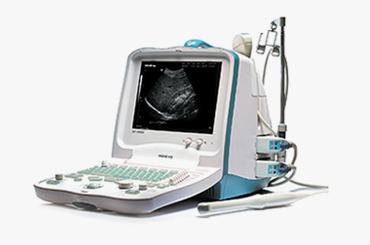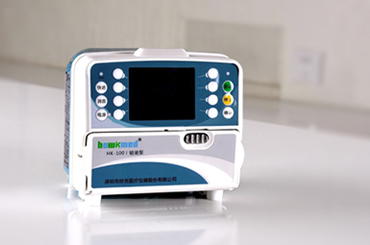What does BMS stand for?
APR 09, 2024 Pageview:1
For decades we have been using batteries without optimizing them well. When a battery is used in an electronic device, it must be optimized for both the charging and discharging phases. It is because that helps make the batteries safer and improves their performance as well.
One of the recent innovations in the battery industry is the BMS which is an electric device used with batteries. It has only been there for a few decades, but it is one very important component for most electronics. So, in this article, we will be discussing what this term means and all about its underlying technology
Definition
BMS means Battery Management System which is an important component used for the management of rechargeable batteries. It not only ensures efficient operation but also brings safer usage conditions. The primary feature of this circuit is to monitor the operation of the battery and monitor the current, voltage, temperature, and SOC of individual battery cells or battery packs.
After monitoring and collecting this data, the BMS analyzes this data in real time and measures the operational conditions to optimize the charging or discharging states. Hence, it provides optimal performance, better safety, and overall system reliability, and on top of everything it improves the lifespan of the battery.
The Key Components of BMS
BMS is the name of an electronic device, and it is based on multiple key components. Below is a list of all the essential components that are present inside a battery management system.
1.Battery Monitoring Unit
This component is responsible for collecting data from different sensors. It then uses that data to monitor the current state of individual battery cells and battery packs.
2.Battery Control Unit
The battery control unit is responsible for executing different control algorithms based on the input from the battery monitoring unit. This unit is responsible for managing the charging, discharging, and cell/pack balancing operations in the battery.
3.Protection Circuit
There are multiple sensors and circuits for the protection of the battery. These include over-charge, over-discharge, short circuit, thermal runaway, etc. These sensors and circuits ensure the safe operation and storage of the battery.
4.User Interface
A BMS contains a user interface that provides a visual representation of battery operation metrics and status. Moreover, it contains control options to set battery status configurations.
5.Communication Interface
Lastly, there is a communication interface component that is responsible for communication between external devices and the BMS. It helps with data exchange, remote monitoring, and integrating smart features.
Technology
When it comes to the technology that runs a BMS, there is a range of innovative solutions which not only include the hardware components but also some software solutions that help improve performance. When these components work together, the BMS technology becomes highly efficient. Below is all you need to know about BMS technology.
Software and Hardware Combination
Starting with the software solutions, a BMS contains different software platforms for the following requirements:
Data analysis
System monitoring
Status control
This software is based on different algorithms that analyze the battery operational parameters and provide valuable insights about battery health. Moreover, these algorithms can automate different situations which will be vital for controlling batteries under unattended situations automatically.
All of this is possible through real-time data collection by hardware components and then real-time analysis and automation with the help of software solutions.
Smart Safety Features
In its early days, the BMS technology was not very efficient in terms of safety. Its focus was on efficient operation and not on the other protection and safety requirements. However, BMS technology has evolved a lot in the past few years. Today there are multiple hard-coded features present in BMS technology along with automatic ones.
The automatic ones are controlled with the software present in BMS hardware. This prevents the battery from thermal runaways and helps maintain a safer operational experience. One of the most advanced things in the BMS safety feature is the communication interface that alerts users based on wireless notifications.
In this way, whenever a special event is happening with the battery, the user is aware of it.
Performance
The battery management system has a crucial role in maintaining and optimizing battery performance. It is because it controls every operation like charging and discharging. On top of everything, it has its impact on the operational cost which is vital for cases when the battery application needs to be scaled.
Battery Efficiency Improvements – Charging
Efficiently charging the battery is vital for achieving efficiency in its operation. The battery management system plays an important role in optimizing the charging of the battery which results in better performance and longevity from the battery. It is possible because of the modern algorithms that ensure to provide faster charging speeds.
Moreover, the battery charges by balancing every cell or pack which further improves the charging efficiency without overheating or overcharging any cell.
Battery Efficiency Improvements – Output
The next role of BMS is in improving output efficiency. Different battery applications have different output power requirements. Some need more power while some need less but all of them require consistent performance for a stable system. The BMS is responsible for providing that to the load since it optimizes the battery output performance.
A BMS takes care of output from the battery according to the battery's internal chemistry and optimizes the operation accordingly.
Impact on Cost Reduction for Battery Operation
A BMS also has an impact on the cost of battery operation. When batteries are used, they add up costs in the form of battery replacement and charging. When you use a BMS with the battery, the least amount of energy will be wasted during charging and discharging. Similarly, the battery life will be prolonged resulting in less battery operation cost.
Conclusion
BMS means Battery Management System and as the name says, it is an electronic device that is used for optimizing and managing battery operation. The duties of this electronic circuit include taking care of balanced battery charging needs, optimal power output, managing battery safety requirements, etc.
BMS is the reason why we have advanced a lot in the battery industry because it not only allows us to gain efficient charging results but also helps with delivering the right amount of power without causing any damage to the battery cells.
- Prev Article: How to achieve charge and discharge management of battery BMS?
- Next Article: Discharge Management of Battery BMS
Leave Message
Hottest Categories
-
Hottest Industry News
-
Latest Industry News










